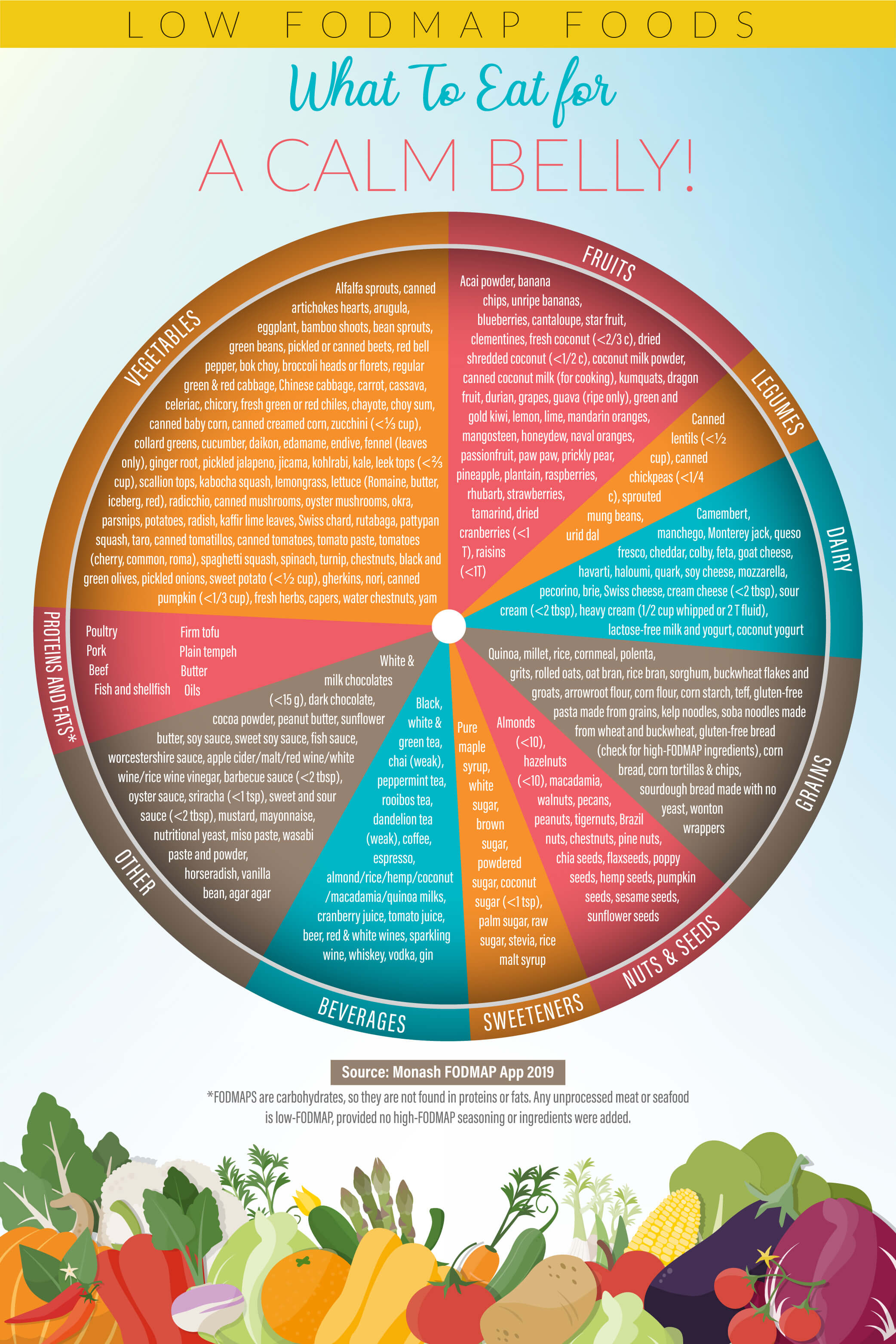The low FODMAP diet has gained popularity among individuals seeking relief from digestive issues such as irritable bowel syndrome (IBS). This diet involves limiting or avoiding certain types of carbohydrates known as FODMAPs, which stands for fermentable oligosaccharides, disaccharides, monosaccharides, and polyols. These carbohydrates can be poorly absorbed in the small intestine, causing symptoms like bloating, gas, and abdominal pain. If you’re new to the low FODMAP diet, it’s essential to have a reliable source of information and a comprehensive food list to guide you along the way.
The Ultimate Low FODMAPs Food List & Shopping Guide
 One valuable resource for individuals following a low FODMAP diet is a handy food list and shopping guide. This comprehensive guide is especially helpful when you’re planning your meals and grocery shopping. It provides you with a list of foods that are low in FODMAPs, allowing you to make informed choices to manage your symptoms effectively.
One valuable resource for individuals following a low FODMAP diet is a handy food list and shopping guide. This comprehensive guide is especially helpful when you’re planning your meals and grocery shopping. It provides you with a list of foods that are low in FODMAPs, allowing you to make informed choices to manage your symptoms effectively.
Starting the Low FODMAP Diet
 Another useful resource for starting the low FODMAP diet is a guide specifically created by Monash FODMAP. This guide provides valuable information and tips for implementing the diet, including a detailed dietary plan and guidelines on portion sizes. Following these recommendations can help you successfully navigate the low FODMAP journey and find relief for your digestive issues.
Another useful resource for starting the low FODMAP diet is a guide specifically created by Monash FODMAP. This guide provides valuable information and tips for implementing the diet, including a detailed dietary plan and guidelines on portion sizes. Following these recommendations can help you successfully navigate the low FODMAP journey and find relief for your digestive issues.
FODMAP Food List: What to Eat to Relieve IBS
 When it comes to relieving IBS symptoms through diet, understanding what foods to eat is crucial. This comprehensive FODMAP food list serves as a guide to help you confidently navigate your food choices. With this list, you can identify which foods are safe to consume in appropriate portions, allowing you to plan meals that are both delicious and supportive of your digestive health.
When it comes to relieving IBS symptoms through diet, understanding what foods to eat is crucial. This comprehensive FODMAP food list serves as a guide to help you confidently navigate your food choices. With this list, you can identify which foods are safe to consume in appropriate portions, allowing you to plan meals that are both delicious and supportive of your digestive health.
The Essential Guide to the Low FODMAP Diet
 Embarking on the low FODMAP diet may feel overwhelming at first, but with a comprehensive guide, you can easily get started. This DIY beginner’s guide provides you with all the essential information you need to understand and implement the low FODMAP approach. It covers everything from the basics of the diet to practical tips and tricks for incorporating low FODMAP foods into your meals.
Embarking on the low FODMAP diet may feel overwhelming at first, but with a comprehensive guide, you can easily get started. This DIY beginner’s guide provides you with all the essential information you need to understand and implement the low FODMAP approach. It covers everything from the basics of the diet to practical tips and tricks for incorporating low FODMAP foods into your meals.
Incorporating a low FODMAP diet into your lifestyle can make a significant difference in managing your digestive issues. However, it’s important to remember that everyone’s tolerance for FODMAPs may vary, and your diet may require customization based on your individual needs and responses to certain foods.
Make sure to consult with a registered dietitian or healthcare professional to personalize the low FODMAP diet to your specific requirements. They can guide you in creating a well-balanced meal plan that meets your nutritional needs while avoiding triggering FODMAPs.
By becoming familiar with these helpful resources and guides, you can confidently pursue the low FODMAP diet and discover a path to digestive peace of mind.